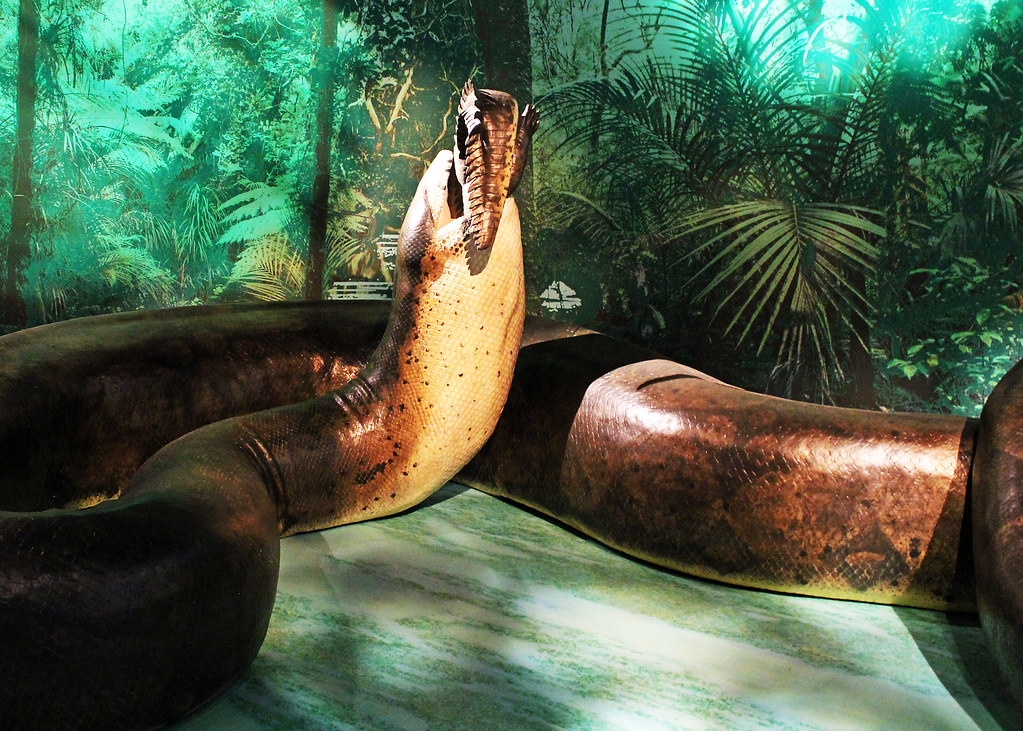#Paleocene
Text

New discovery, just announced a couple of days ago!
164 notes
·
View notes
Text

Interested in a post-apocalyptic story about our primate ancestors trying to survive after the end-Cretaceous mass extinction? @tmkeesey's Kickstarter for his comic Paleocene is over 80% funded but has only 3 days left, so please consider supporting!
Bonus: If you DM @knuppitalism-with-ue with backing confirmation at the time of this posting, you can receive a free sketch!
177 notes
·
View notes
Text
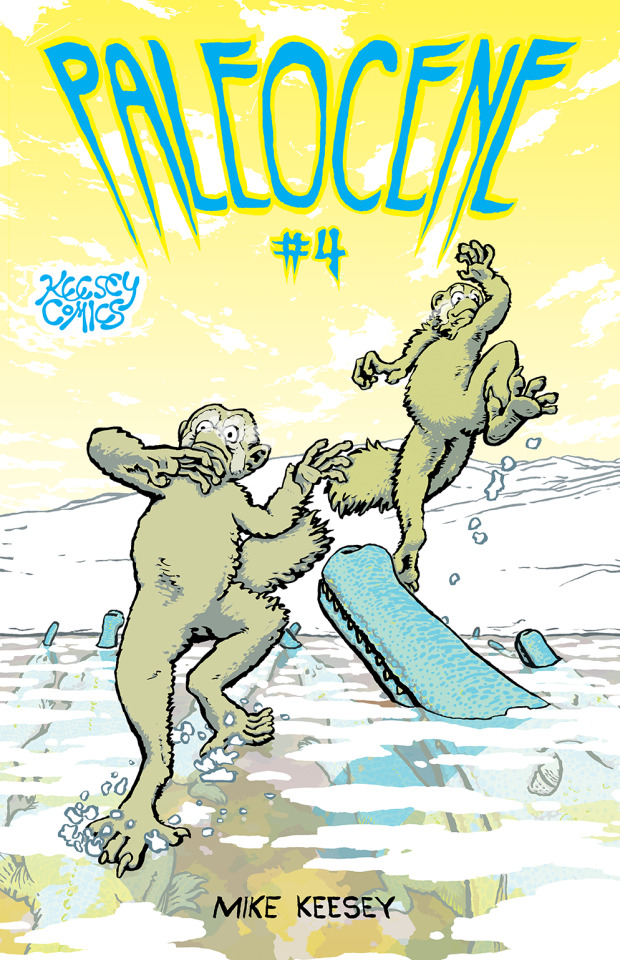
The front cover for my upcoming comic book, Paleocene #4. Check out the campaign to get it printed!
Sixty-six million years ago, the world ended.
A meteorite over ten kilometers in diameter slammed into the Earth. The explosion released two million times as much energy as the largest nuclear bomb ever detonated. All life in the vicinity was instantly obliterated.

For the rest of the world, death was slower. A shroud of soot and dust engulfed the Earth. Without sunlight, plants withered and died, setting off a domino effect up the food chain, all the way to mighty predators like Tyrannosaurus rex. Three quarters of all life on Earth perished, starving in the darkness.
But we survived.
Not “we” as in humankind. This was much earlier. But our early primate ancestors—they persisted. With clutched hands and shining eyes, they witnessed the end of the world … and the early dawn of a new one.

What's in the new issue?
After witnessing a predatory bird devour their fellow troop member, Mamma and Brother continue their search for Sister … now in the freezing cold of winter.
Could the little child possibly have survived? What will happen to Auntie and the rest of the troop in their absence? And, as Brother grows up, will he stay with his Mamma?
If you've been following the story so far, you'll definitely want to read this one, because, I promise, you will finally discover Sister's fate!
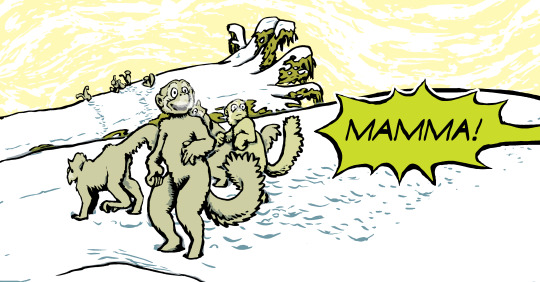
#paleontology#comic covers#comicart#comics#dinosaur#paleoart#palaeoblr#primates#evolution#fossils#prehistoric#biology#zoology#paleofiction#cenozoic#palaeontology#paleocene#reptile#comic books#dinos and comics#comic art#extinction#deep time
142 notes
·
View notes
Text
If you back the Paleocene Kickstarter and DM @knuppitalism-with-ue RIGHT NOW, you'll get a free sketch from a professional paleoartist!
54 notes
·
View notes
Text
Clymenoptilon novaezealandicum Mayr et al., 2023 (new genus and species)

(Type specimen of Clymenoptilon novaezealandicum [scale bar = 50 mm], from Mayr et al., 2023)
Meaning of name: Clymenoptilon = Clymene [mother of Phaethon in Greek mythology, referencing the extant tropicbird genus Phaethon] feather [in Greek]; novaezealandicum = from New Zealand
Age: Paleocene (Danian–Thanetian)
Where found: Waipara Greensand, Canterbury, New Zealand
How much is known: Partial skeleton of one individual, including the skull, the right wing, and several vertebrae.
Notes: Clymenoptilon was a close relative of extant tropicbirds, a group of seabirds with long, streamer-like tail feathers. Modern tropicbirds are restricted to equatorial regions, but fossils of their close relatives have been found all over the world, with Lithoptila from the Paleocene–Eocene of Morocco and Prophaethon from the Eocene of the United Kingdom being the most completely known. Although a previously described fossil of a smaller bird from the Waipara Greensand may represent another proto-tropicbird, Clymenoptilon provides the clearest evidence to date that members of this lineage were present in the Paleocene of New Zealand as well.
Clymenoptilon is one of the oldest proto-tropicbirds known and appears to have been less closely related to modern tropicbirds than Lithoptila and Prophaethon. Whereas Prophaethon was probably better adapted for swimming than modern tropicbirds (which may rest on the water's surface but primarily catch prey by diving from the air), Clymenoptilon may have been a less specialized swimmer than Prophaethon based on its hip anatomy, though further assessment of its swimming capabilities will depend on the discovery of its hindlimb bones, which are currently unknown.
Reference: Mayr, G., V.L. De Pietri, L. Love, A. Mannering, E. Crouch, C. Reid, and R.P. Scofield. 2023. Partial skeleton from the Paleocene of New Zealand illuminates the early evolutionary history of the Phaethontiformes (tropicbirds). Alcheringa advance online publication. doi: 10.1080/03115518.2023.2246528
63 notes
·
View notes
Text

Paleovember 2023, Barylambda!
This strange animal, roughly the size of a pony, was the largest known member of the pantodonts, one of the first groups of large mammals to evolve in the Paleocene, right after the extinction of the dinosaurs. Barylambda itself was the largest animal in its environment; it's powerful tail would have allowed it to rear up on two legs to reach it's preferred food of soft vegetation and other foliage. Males also possessed a pair of canines for intraspecific combat.
#pantodont#paleocene#cenozoic#mammal#paleontology#paleoart#evolution#prehistoric#art challenge#illustration#art#artwork#procreate#animal#artist on tumblr#Barylambda
31 notes
·
View notes
Text
Champsosaurus
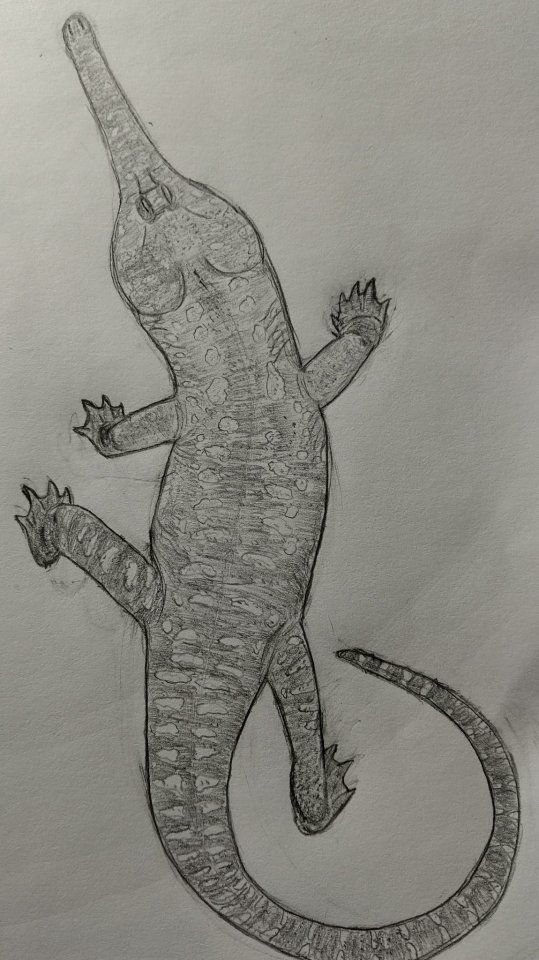
Champsosaurus ("Croc lizard") was a person-sized croc-like thing that lived in the late cretaceous to the early paleocene. Yes, it managed to survive the meteor that killed the dinosaurs. It's resemblance to crocs is convergent, it belonged to a weird group of reptiles called Choristodera which we don't fully know the origin of.
#croctober#crocodile#champsosaurus#choristodera#prehistoric#paleoblr#artists on tumblr#paleoart#mesozoic#cenozoic#paleocene#cretaceous#prehistoric planet#saurian
34 notes
·
View notes
Text
HELP FUND PALEOCENE ISSUE FOUR - it's the comic about animals after the K-T extinction!!
38 notes
·
View notes
Text
my life's work as someone who definitely didn't go to college and will have no impact on the earth is largely ignoring the existence of the Jurassic and Cretaceous period in order to prop up the history of life on Earth that is not the constantly presented non-scientific dinosaurs depicted in every piece of popular art. I do not wish to speak of the Triceratops, I wish to speak of when nearly all life onland was Lystrosaurus, big old cow-like synopsid with fangs. get your sauropods out of here, i want to talk about when crocodiles had land genuses and how we almost lived in a world where some still survived. i never want to see a fucking t-rex ever again, but the world should be as obsessed with sloth bears like megatherium as i am. get these fucking dinosaurs out of my face i want OTHER EXTINCT ANIMALS TO TAKE THE SPOTLIGHT AND I WILL BREAK THE WORLD IN ORDER TO SHOW YOU ALL----
#dinosaurs are a dead meme#kinda cringe to post them tbh#Dinosaurs#Megatherium#Synopsids#Permian Period#Permian Extinction#Triceratops#Crocodiles#Alligators#Jurassic#Triassic#Cretacious#Devonian#carboniferous#Cenozoic#Paleocene#Eocene#Oligocene#Neogene#Miocene#Pliocene#Pleistocene#Mammals#Reptiles#Birds#T-Rex#tyrannosaurus rex#Sauropod#i don't know how to tag this
11 notes
·
View notes
Text

Allognathosuchus
Allognathosuchus — вимерлий рід алігаторових крокодилів зі складною таксономічною історією. Названий у 1921 році.
Повний текст на сайті "Вимерлий світ":
https://extinctworld.in.ua/allognathosuchus/
#allognathosuchus#art#crocodile#alligator#eocene#paleocene#usa#north america#wyoming#paleontology#paleoart#prehistoric#палеоарт#палеонтологія#animals#prehistory#science#fossils#illustration#extinct#ukraine#ukrainian#daily#digital art#україна#мова#арт#українська мова#сша#ua
49 notes
·
View notes
Text
Titanoboa
The largest snake species to ever exist.... until they went extinct
#pokemon#they should make this a pokemon#nature#snake#titanoboa#fossil#paleocene#extinct species#extinct animals
3 notes
·
View notes
Photo




Titanoboa enclosure at the Science Museum of Minnesota.
The current paleontology curator there is one of the guys that discovered it, which is how this touring model ended up there.
40 notes
·
View notes
Photo

a quick barylambda for practice
59 notes
·
View notes
Text

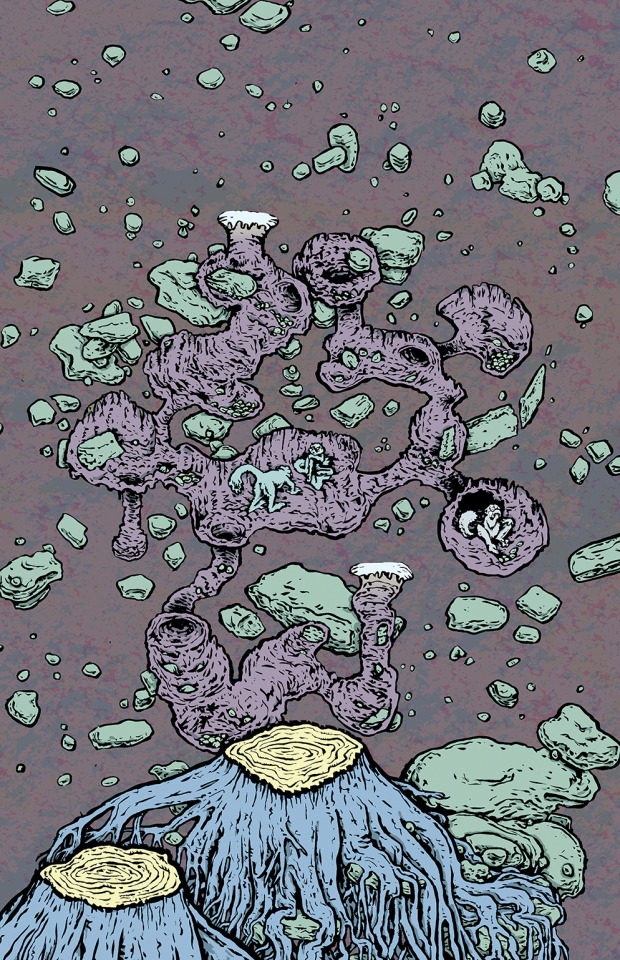
Prehistoric snowscape and cutaway underground view, showing early primates in a complex burrow dug by another mammal. This is the back cover and final page of my new comic book, Paleocene #4. If you like it, please consider supporting the Kickstarter campaign to get it printed.
#paleontology#comic covers#comicart#comics#extinction#palaeontology#paleoart#prehistoric#biology#primates#paleocene#paleofiction#paleoblr#paleomedia#natural history#evolution
51 notes
·
View notes
Text
Multituberculate Earth: Paleocene

This where the timeline diverges.
The first five million years of the Paleocene occur as in our timeline. After a slow recovery multituberculates explode in diversity, dominating the mammal faunas of the north hemisphere. Meanwhile, in the southern continents, gondwanatheres and dryolestoids do the same. Therians radiate in the background, placentals in particularly producing a myriad of forms.
But while in our timeline multituberculates rapidly decline at the end of the Danian (circa 61 million years) and therians take hold, this doesn’t happen here. Instead, multituberculates continue their trajectory as dominant land mammals, while therians decline in their stead. Whatever caused the decline of multituberculates in our timeline doesn’t affect them here; it instead cuts the branches of the therian family tree, and by the end their brief period of exploration comes to an end.
The climate is temperate, warming as the era goes on. Flowering plants dominate the scene, but not as much as in our world, there being also a wealth of conifers, ferns, horsetails and ginkgos among others (this could explain why multituberculates have not declined, but fails to explain why therians did…) In these conditions various groups have prospered in the post-Cretaceous world, including the sole surviving dinosaurs, birds, as well as crocodylomorphs, turtles, amphibians and the mysterious choristodere reptiles. Squamates aside from snakes were strongly impacted by the KT event, and it took them over ten million years to recover in our timeline; this recovery does not happen here, making them join therians on the path to damnation.
In the north hemisphere, cimolodont multituberculates are the dominant mammals. Kogaionids make a brief tour throught Europe, but increasing competition from recently-arrived North American and Asian clades force them back to the isolation of Balkanatolia. Taeniolabidoids dominate herbivorous guilds, taeniolabidids as large sized herbivores across the northern continents and lambdopsalids as a myriad of digging, running and even hopping forms in Asia. Ptilodontoideans diversify across the canopies, and go on to produce the first largest multituberculate carnivores. Microcosmodontids remain largely small sized insectivores, but already vie for large sized predatory roles in some environments. Meniscoessids, inversely, occupy herbivorous roles and don’t diversify as much. Djadochtatheroideans, which evolved in Asia’s desert environments during the Cretaceous, have a hard time ajdusting to a greener world, but still succeed as the mostly predatory eucosmodontids and herbivorous boffiids.
In the trifecta of South America, Antarctica and Australia, gondwanatheres and dryolestoids continue the reign they enjoyed in the Cretaceous. The former are mostly herbivorous, while the latter fulfill all manner of roles from sengi-like runners to large carnivores to long-necked leaf-eaters that earn the title of largest land animal… for now at least. Curiously, some northern mammal groups penetrate into South America from North America much as in our world, but unlike our timeline marsupials are not the ones leaving a lasting legacy. And unlike our timeline, ferugliotheriid gondwanatheres invade the north successfully.
Africa stands as an isolated oddity. Here, a sole lineage of gondwanatheres, the galulatheriids, dominate herbivorous niches, while kogaionids diversify as carnivores and insectivores; whereas the latter have been here all along since the Cretaceous or are recent immigrants from Europe and/or Balkanatolia is unknown. Also weird are Madagascar and India, two isolated landmasses bearing a similar gondwanathere/kogaionid fauna, though the former are composed of sudamericids and adalatheriids instead. India is marching northwards at great speeds, and soon contact between the two faunas will begin…
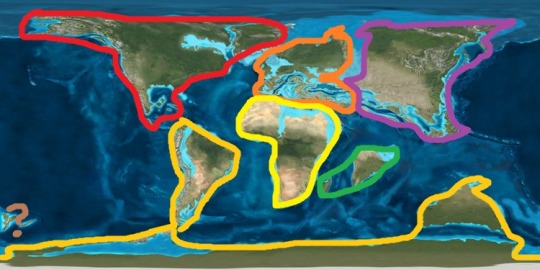
Table of contents
Example Site: Santa Lucia Formation
Heavy Feetsies
Example Site: Khashat Formation
PETM this, PETM that
#multituberculate#multituberculata#multituberculate earth#spec evo#speculative zoology#speculative biology#speculative evolution#paleocene#palaeocene#paleontology#paleoart#palaeontology#palaeoblr#paleoblr
19 notes
·
View notes
Text
Anachronornis anhimops Houde et al., 2023 (new genus and species)

(Skull [A–Q, S], rib fragment [R], and back vertebrae [T] of Anachronornis anhimops [scale bar = 1 cm], from Houde et al., 2023)
Meaning of name: Anachronornis = bird out of time [in Greek, referring to the late occurrence of a form similar to the expected appearance of the last common ancestor of modern waterfowl]; anhimops = Anhima [genus of the extant horned screamer] face [in Greek]
Age: Paleocene–Eocene (Thanetian–Ypresian), 55.8–56.22 million years ago
Where found: Willwood Formation, Wyoming, U.S.A.
How much is known: Partial skeleton of one individual, including a nearly complete skull and forelimbs.
Notes: Anachronornis was likely a close relative of modern waterfowl, which are divided into two major lineages: Anhimae (the screamers, which have slightly hooked, somewhat chicken-like bills) and Anseres (the duck- and goose-like waterfowl, which have broad, spatula-shaped bills). It exhibits a mixture of features characteristic of both of these groups, with the shape of its skull being especially screamer-like. It may therefore represent a form closely resembling the last common ancestor of all extant waterfowl, which would make it a very important discovery for understanding how modern ducks and geese evolved.
The type specimen of Anachronornis had been mentioned in previous scientific literature starting in the 1980s, but was left undescribed until now. Anachronornis may have foraged near water, like modern waterfowl, though it does not appear to have been particularly specialized for swimming or wading.
Reference: Houde, P., M. Dickson, and D. Camarena. 2023. Basal Anseriformes from the early Paleogene of North America and Europe. Diversity 15: 233. doi: 10.3390/d15020233
#Palaeoblr#Birblr#Dinosaurs#Birds#Anachronornis#Paleocene#Eocene#North America#Galloanserae#2023#Extinct
78 notes
·
View notes
